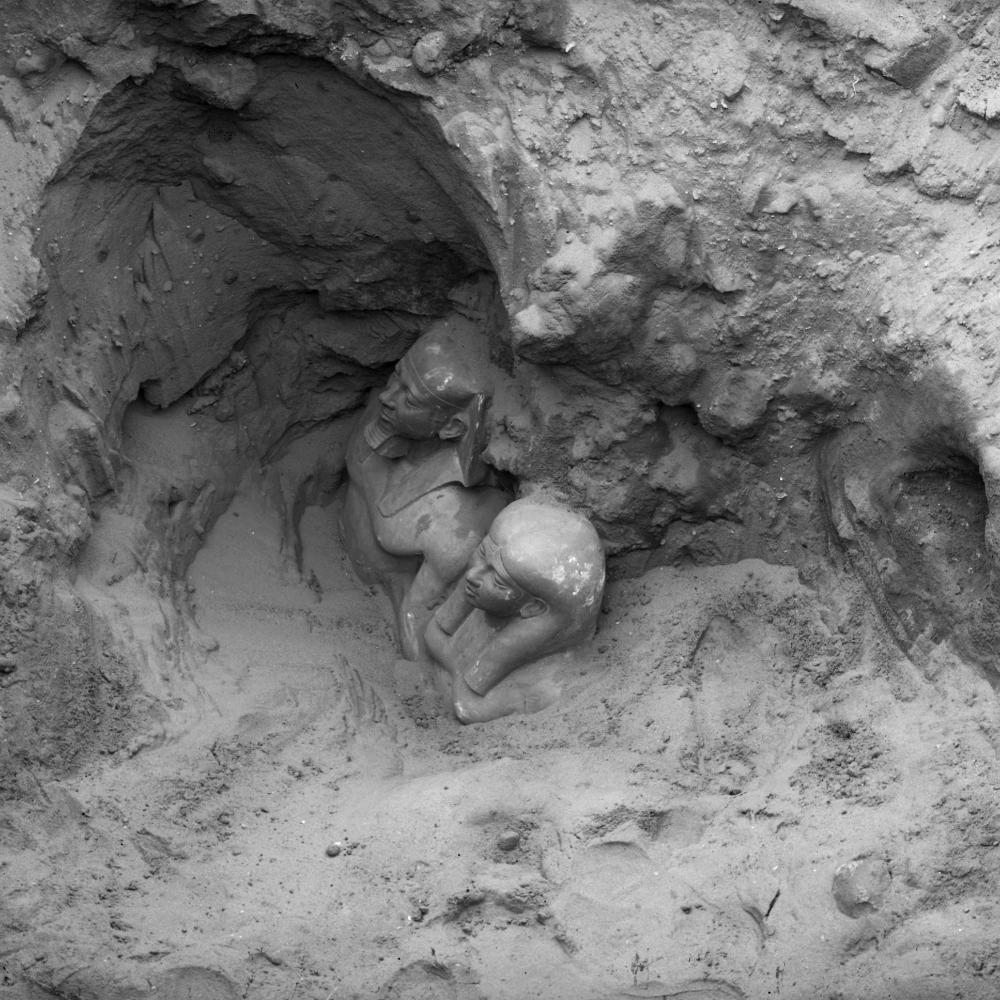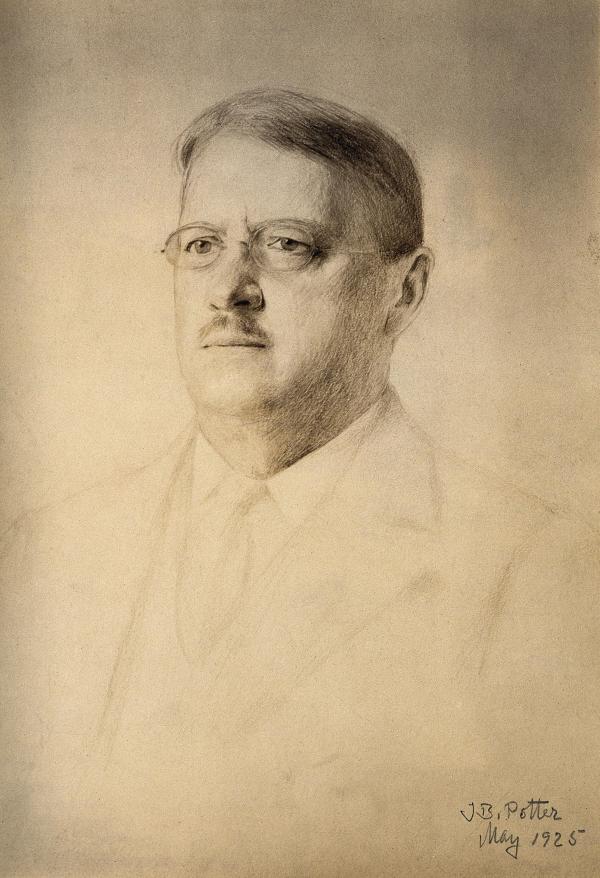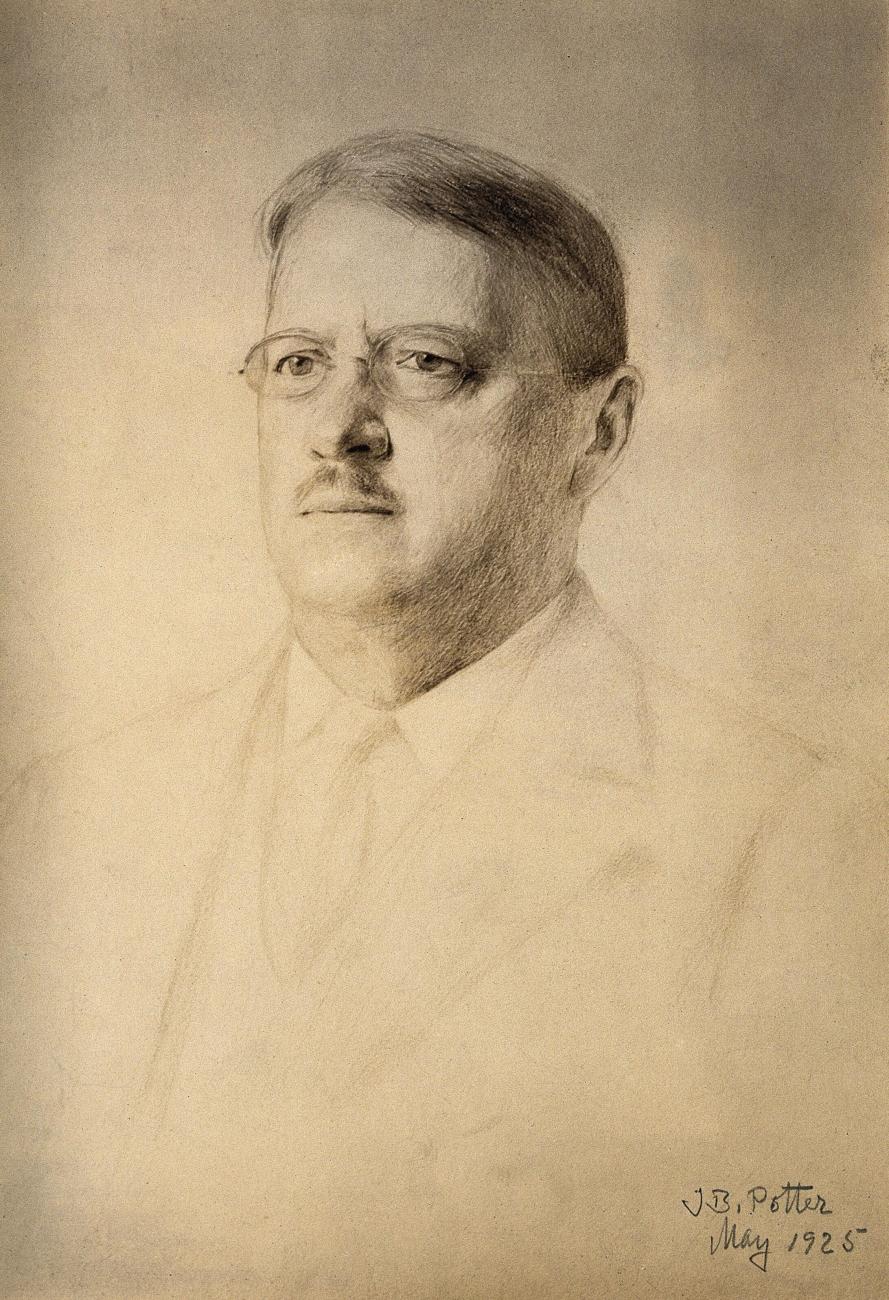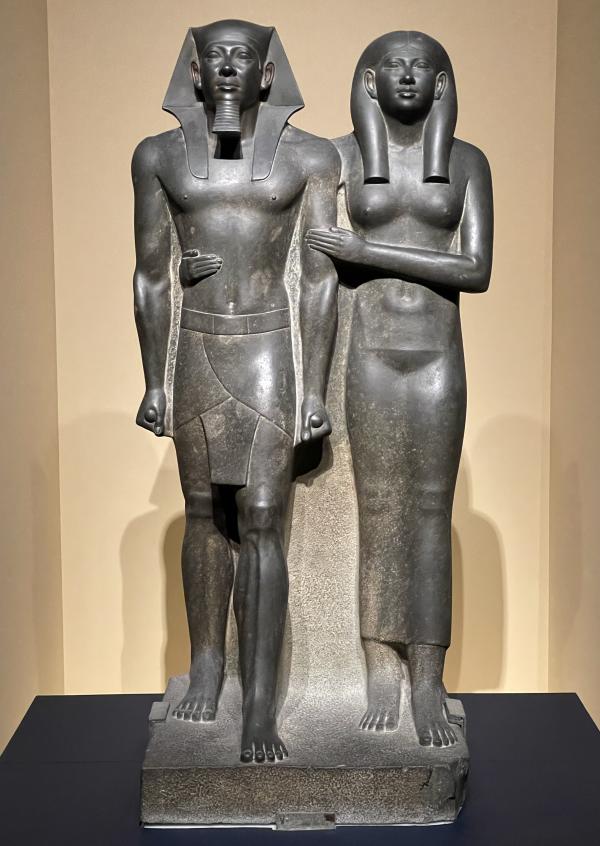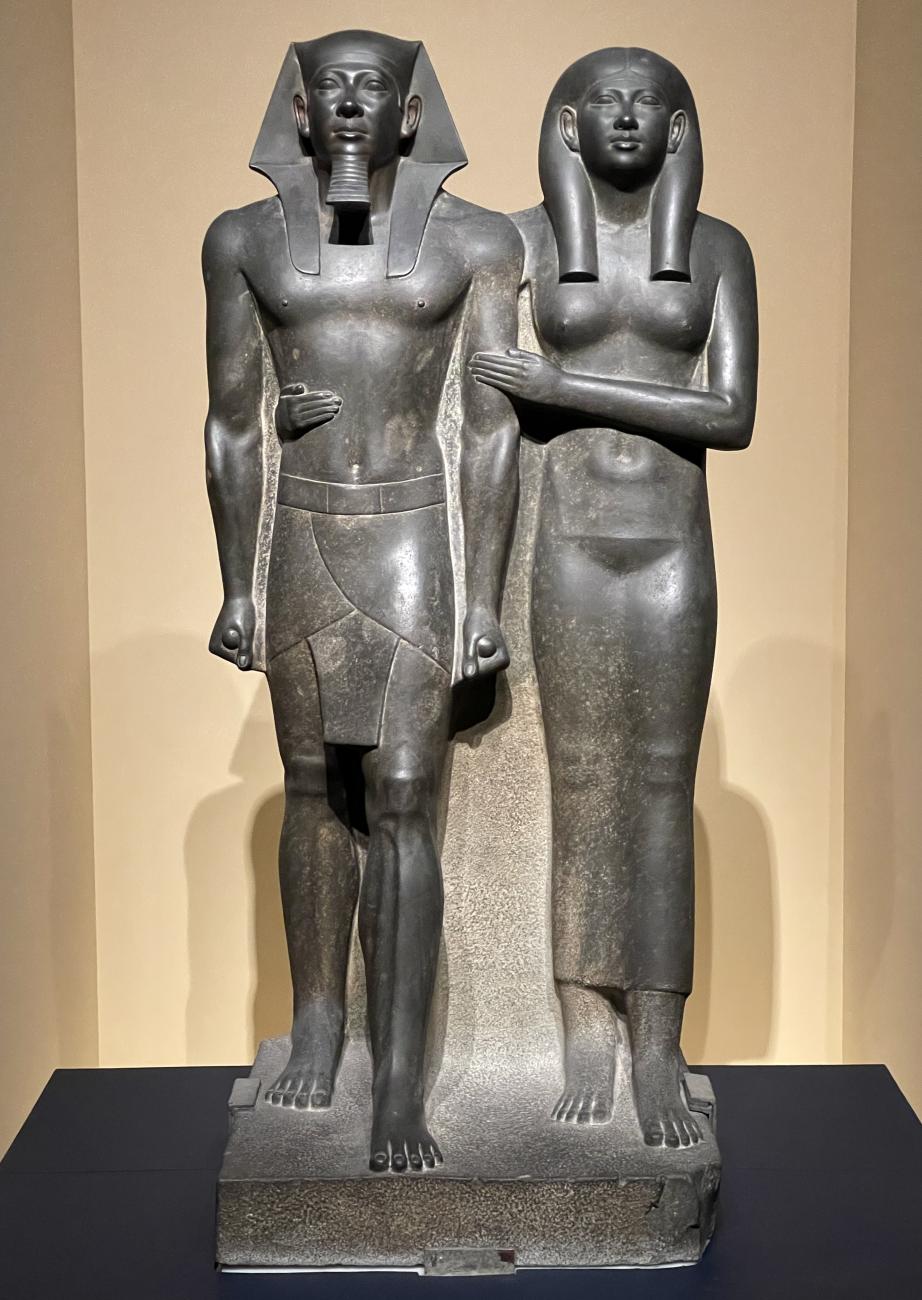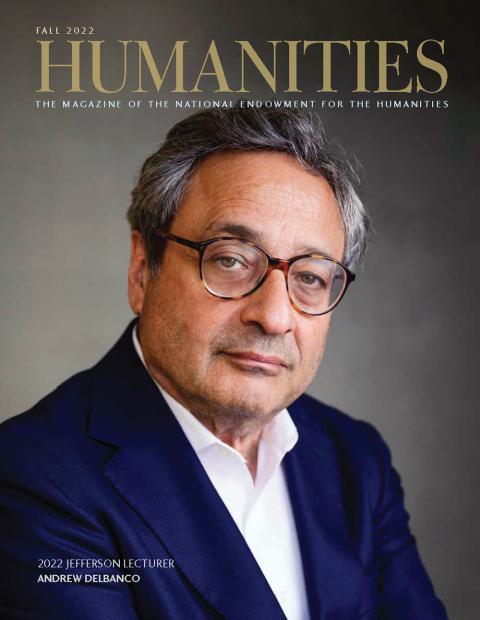“Come!” was the one-word summons from the teenaged Egyptian laborer to the forty-three-year-old Egyptologist hard at work at his desk. The date was January 18, 1910; the scene, a dusty office within a series of simple mud-brick huts located just behind the famous Giza pyramids, west of Cairo. This place was known as Harvard Camp; little remains of it today, but it was command central—and the only home—for the desert-hardened American archaeologist George Reisner and the Harvard University-Boston Museum of Fine Arts expedition for more than four decades. It was the end of a long day. Reisner was tired, and he had no idea who had sent the boy nearly half a mile uphill from his post at the Menkaure Valley Temple excavations, east of the third Giza pyramid. But perhaps this was a discovery that couldn’t wait—it was worth one more trip down to the excavations.
As the sun descended in the west and the pyramids cast ever-longer shadows over the ancient cemeteries, Reisner accompanied the boy to the temple and peered into what he took to be a robber’s hole between the royal mortuary temple’s mud-brick walls. Here his dependable Egyptian workman Taia Mohamed had made a unique find. At first, only the perfectly preserved female head of a nearly life-sized statue was visible. Then some debris fell away to reveal the face of a king beside the woman. A photo was taken with a large-format plate camera, but clearance of this royal pair statue, or dyad, would have to wait until morning; twenty men, some armed with guns, stood guard overnight.
The next day, Reisner “cleared the full diameter of the hole down to the feet of the statue,” he wrote in his expedition diary. “All perfect—except a scarcely noticeable chip from the end of the king’s beard. Beautiful work.” There was no doubt the king represented was King Menkaure himself. Taia Mohamed was rewarded with some serious baksheesh, a bonus payment for this discovery, which was carved in hard, dark stone called greywacke and from the Fourth Dynasty (about 2472 BCE), the zenith of Egypt’s “Pyramid Age.” The powerful images of the king and his queen—or perhaps his mother or a goddess?—were not only exquisite. They reflected idealized realizations of the human form in all its power, the statement of a master sculptor who used his copper chisel and polishing stones 4,500 years ago. In the king’s visage, the human merged with the divine, one of the most striking representations of kingship from any of Egypt’s many dynasties. Only traces of paint remained, but the base was unfinished and unpolished; one would normally expect hieroglyphic inscriptions there to identify the couple.
At the time of this stunning new discovery, Reisner had spent eleven years digging in Egypt, Sudan, and Palestine. An Indianapolis native who began his career at Harvard studying cuneiform texts from Mesopotamia and Biblical Hebrew, Reisner was now the undisputed master of arguably the most famous archaeological site in the world: the Giza pyramids. It may seem ironic that Reisner, a man of relatively humble origin, the son of a shoe salesman, should find one of the greatest Egyptian royal statues ever to come to light. Moreover, he found it in the smallest of the three pyramid complexes at Giza where no one else had wanted to dig (the temple was completely buried and unknown), and he discovered it in between two field seasons spent in Palestine searching not for Egyptians but for ancient Israelites. The statue was and is an artistic treasure, but Reisner always claimed his priority was not art but “historical research.”
By the end of his career, Reisner had conceived and managed, at times by sheer force of will, one of the longest-running and most successful expeditions anywhere. He took the fledgling discipline of archaeology to new heights, or rather depths, instilling stratigraphic order where there had been only plunder and chaos, and developing state-of-the-art documentation and analytical techniques. With forceful scholarly prose and utter conviction in his own historical interpretations, Reisner practically bullied the field into following his reconstructions of the past. He could show his Egyptian workmen great respect, empathy, and compassion, yet he never overcame the blind spot that prevented him from recognizing ancient Nubian culture, to Egypt’s south, as a great Indigenous African civilization. (He was taken to task for his views by such Afrocentric scholars as W.E.B. DuBois and William Leo Hansberry.) William Randolph Hearst once called Reisner “a very honest, energetic little gentleman who has determination (which is excellent) to the point of obstinacy (which is not so good).” The field of Egyptology today continues to confront and correct a legacy of archaeological colonialism and even racism toward ancient peoples of Egypt and Sudan; as a man of his era, Reisner on occasion displayed such biases as well.
In the first half of the twentieth century, the British controlled the Egyptian government, while the French managed Egyptian antiquities. A partage system was in effect whereby foreign missions were entitled to 50 percent of their finds for the home institution. The Frenchman Gaston Maspero headed the Egyptian Antiquities Service, and he had final say over which of Reisner’s Giza finds should go to the Cairo Museum and which would go to Boston. In 1910, other finds from previous seasons at King Menkaure’s temples had already been divvied up, leaving the great pair statue alone on the list; a fifty-fifty division is difficult when there is only one object to “divide.” Antiquities Service division law stated that payment for half the value of a singular object was one option, so Reisner asked Maspero if something might go to Boston out of the Egyptian Museum collection as his half of the division. After much back and forth with no agreement, Maspero ultimately offered the newly found pair statue for Boston and, as compensation for Cairo, said that Reisner should return one of the two Menkaure triad statues already at Boston (Cairo and Boston each had two of these, from the total of four discovered in 1908). Did one triad equal half a dyad? Maspero seemed to think so. Trying his best to keep his cool, Reisner hurried out to inform Boston about the proposal, spending a whopping twenty-eight dollars—the price of a gold pocket watch—on the cable.
Reisner could not believe his good fortune. Knowing all too well how tongues might wag in Cairo, he cautioned the museum authorities in Boston about the situation: “There is certain to be a great deal of talk about it here, a great deal of criticism of Maspero for allowing the pair statue to leave the country. . . . In this new pair, we have a piece which will distinguish the Boston Collection for centuries.” And to Arthur Fairbanks, who ran the museum in Boston, he wrote: “There is not a museum director in the world who will not envy you the acquisition.”
Two years later, the blowback intensified. “I do not understand how Maspero could allow the slate pair to leave Egypt,” said Yacoub Artin Pasha, the Armenian undersecretary of education, as he lunched with Reisner and his wife Mary. Reisner was then summoned to meet with Horatio Herbert Kitchener, the British agent and consul general. Kitchener’s secretary later recalled the string of expletives his boss, who was “neither a scholar nor a writer,” uttered upon hearing that the statue, “a national monument of Egypt recently discovered by Dr. Reisner, had been allowed to go to the Boston Museum.”
Once Reisner recounted the complex negotiations with Maspero, Kitchener saw no point in reopening the case, but he requested that a replica statue be fabricated in Boston and shipped to Cairo (one which still exists in the Cairo Museum today). Taking Kitchener into his confidence, Reisner said that “there is a campaign being carried on against Maspero by interested persons but that it would be a mistake to listen to the criticism. . . . Any change could only be for the worse.”
“That is exactly what I say,” Kitchener replied, who then asked Reisner to assess his own antiquities collection in his drawing room, while “half a dozen notables were kept waiting for their interviews.”
Partage divisions ended long ago when the Antiquities Service came under Egyptian control where it belonged. But the Menkaure pair statue has been electrifying museum visitors in Boston from all over the world for generations. It remains the crown jewel of the assigned Boston half of Reisner’s breathtakingly successful Egyptian and Nubian excavations. Looking back on this extraordinary discovery and subsequent events, Reisner wrote in 1931: “I have always counted that excavation at the temples of the Third Pyramid as the most fortunate of my experiences. They led to the establishment of the Harvard–Boston Expedition on a firm basis, to my appointment as a curator of the Egyptian Department of the Boston Museum of Fine Arts, and to a professorship of Egyptology in Harvard University.”

